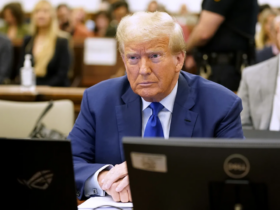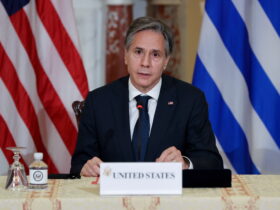United States – The US Department of Commerce has set aside approximately $30 billion in subsidies for the construction of semiconductor factories, which will stabilize American artificial intelligence (AI) chip development and manufacturing on its own soil.
Balancing Act for Biden’s administration
However, realizing this objective within the coming few weeks after funding receipts is becoming really difficult for the experts. The administration under Biden will have to determine how much taxpayer funding should go to Taiwan Semiconductor Manufacturing, a foreign leader with tremendous influence, and Intel, a still locally weak but promising company whose turnaround efforts remain promising but untested.
Laying down bets on AI chips is also a challenge in the quickly changing industry. Tomorrow, the subsidization deals you might provide to Intel, TSMC, or Samsung, its rival, which is also asking for those federal dollars, do not mean security in the AI landscape of the future.
“AI itself is moving so quickly, if you focus on today’s AI chips, maybe two years from now it’s a whole different thing,” said Jay Goldberg, chief executive of D2D Advisory, a finance and strategy consulting firm. “As opposed to the (general) road map of advanced chipmaking, which we know pretty clearly for the next decade.”
The US CHIPS Act in Action
The money will originate from an act called the US CHIPS Act, which was passed in 2022. The facilities owned by Intel and Samsung, both in America, and the fabrication facility built by TSMC in the USA, all have a chance to get some amount of US subsidies. The central issue is how to equally spend the money so that US officials can pursue the ultimate goal of boosting AI chip manufacturers.
“We don’t manufacture or package any of the leading-edge AI chips needed to fuel the innovation ecosystem and power our most critical defense systems,” US Commerce Secretary Gina Raimondo said in a speech last month. “We cannot build the next generation of technological leadership on such a shaky foundation.”
MADE IN TAIWAN
At present, TSMC, a world leader in AI chip making, still hasn´t undertaken to localize its most advanced technology in the US.
Right now, TSMC manufactures chips for Nvidia, Advanced Micro Devices, Microsoft, and Alphabet’s Google in Taiwan. The company is projected to do those advanced 3-nanometer manufacturing, which is now used to produce Apple 15 Pro chips, not in Arizona until 2027 or 2028, despite the beginning of mass production in Taiwan last year. It is still to be known what they have in store for the 2-nanometer technology, which will be manufactured starting next year in Taiwan, as reported by Reuters.
A TSMC spokesperson said the company has made “steady progress in productive ongoing discussions with the US government on inventive funding” and that its first factory in the US “will enable the leadership in the 5G and artificial intelligence era for decades.”
Samsung, TSMC’s rival, is now developing a factory in Taylor, Texas, and anticipates using the latest advanced manufacturing technology. However, as some market analysts and industry insiders believe, Samsung has struggled in the past to get good yields in the fabrication of chips on each wafer, rendering such high-volume production unprofitable.
By way of e-mail, Samsung forwarded queries by Reuters to its fourth-quarter earnings call, in which executives were quoted as saying that the company’s state-of-the-art manufacturing production lines are mass-producing chips and that demand for AI Accelerator chips is up.
Intel’s Unique Position
Therefore, it is only Intel that has been directly linked to their most advanced manufacturing technologies, which are known as “18A” and “14A.” They have not announced any significant clients that are ready to use these technologies to develop AI chips.
A large portion of the money that the government intends to spend on CHIPS Act, according to many analysts, will go to Intel for the continuation of these programs which Mr. Gelsinger announced in the USA on the early days of his tenure as the company’s chief executive.
Intel offers some advantages. AI (artificial intelligence) chips are now comprised of smaller chipsets that have to be carefully packed together in strings of nanometer size, which is what Intel claims: that it can combine chips made by its own factories with others fabricated by its competitors, like TSMC.
“Their bias is that they’re going to be the (manufacturer) of choice for these crazy complex systems of chips. And they’re going to do that in the United States,” said Ben Bajarin, chief executive of analyst firm Creative Strategies.
Moreover, Intel is somehow an underdog in the competition with TSMC for leadership in manufacturing. So, it is urgent for Intel to retake its manufacturing lead. First, the company has to get adjusted to the fact that it will manufacture parts and components for other companies.
Intel’s Road Ahead
While TSMC’s recently launched Intel My technology looks like solid technology on paper, the truth is that almost every mature AI chip in the market nowadays is actually made by TSMC.
“The biggest issue they have is to execute,” Dan Hutcheson, vice chair at analyst firm Tec Insights, said of Intel. “The whole foundry business is a good year or two away before they either make it or break it.”
A spokesperson from Intel stated in a press release that the company is still on the “18A” manufacturing plan and hopes to have the process ready for manufacturing in the second half of the year.


















